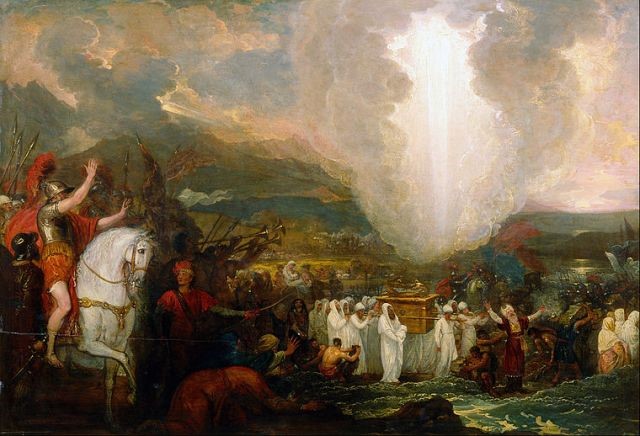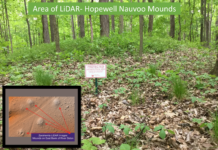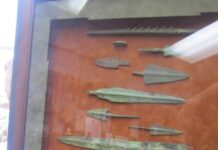Personal Cults
“Have you noticed there are more and more people in the world who have been left to their own senses and take it upon themselves to be their own god or their own leader, or a member of their own cult?
Man has a tendency to want to find someone that they can idolize in the short term and then conquer or put down that person they idolized and take over his so called congregation.
See today the Rock Stars, Politicians, Sports Heroes, Dancers, Mathematicians, Scientists, Professors, Hollywood Celebrities’ and on and on. They all want to be the best in their field and if there is no God in the way, they can one day become the best in their little haven of happiness. Who wants God around to spoil our party? Why should we listen to Him and so they pretend God is not real. Satan encourages them to do anything, right or wrong so they have no one to answer to, so the evil in the world is climbing rapidly.
One other thing I have noticed is there are many great people in this world who are doing everything they can to follow God and love Him. They may call this a spiritual manifestation, or consciousness, or Father, or Christ, or my conscious, or someone whom I have an interconnectedness with, but they see God as something good that will lead them. I think we members of The Church of Jesus Christ of Latter-day Saints have a special calling to be sure and have all people whether good, evil, righteous, wrong or on the wrong track, teach them who the real Lord and Savior is and that His Book of Mormon is true. That opportunity I believe is coming soon to spread that message to parts of the world never before reached in, Saudi Arabia, China, Iran and Israel. Won’t that be a wonderful opportunity?
There has been a huge movement towards a group called Doctrines of Christ.
“The devil has only one purpose: to destroy testimony in order to destroy the ordinances, the doctrines of salvation, and exaltation to which Brigham Young, John Taylor, Willard Richards and others testified of to the anger of Joseph Smith’s enemies-enemies from within who were in league with the underworld.” Kimberly Smith Joseph Smith Foundation
TODAY THERE IS A NEW CONSPIRACY
A conspiracy over the death of the Prophet Joseph Smith and who killed him. A new movie called “Who Killed Joseph Smith?” by Justin Griffin is a very sad narrative.
In our generation, enemies from within the church-also in league with the under world- blame Joseph Smith’s closest and most faithful associates for his murder. Why?
To do that which was done in 1844: to destroy testimony in order to destroy the ordinances, the doctrines of salvation, and exaltation to which Brigham Young, John Taylor, Willard Richards and others testified of to the anger of modern apostates who reject Temple ordinances and the wearing of the Temple Garment.
It must be observed that the very conspirators behind the plot to kill the Prophet Joseph Smith and his brother Hyrum were men once enlightened by the Spirit of God; they had great knowledge of things revealed to them pertaining to righteousness—and then, having fallen away into sin and disbelief, they rejected the revelations of Joseph Smith, and their minds became darkened—eventually leading them to betray the Prophet and to seek to take away his life.
The type of apostates that existed in the early days of the Church are similar to the type we face today. Full Blog Here
False Doctrine may be Taught
“I do not know all of the providences of the Lord, but I do know that he permits false doctrine to be taught in and out of the Church and that such teaching is part of the sifting process of mortality.” Bruce R. McConkie, McConkie’s 1981 letter to BYU
“With a trained mind and a skillful manner of presentation, a teacher can become unusually popular and effective in teaching. But Satan will try to use that strength to corrupt the teacher by encouraging him or her to gather a following of disciples. A Church or Church education teacher or LDS university professor who gathers such a following and does this “for the sake of riches and honor” (Alma 1:16) is guilty of priestcraft.” Dallin H. Oaks
He is doing exactly what then-Elder Dallin H. Oaks warned the students at BYU about in 1992:
“A desire to follow a prophet is surely a great and appropriate strength, but even this has its potentially dangerous manifestations. I have heard of more than one group who are so intent on following the words of a dead prophet that they have rejected the teachings and counsel of the living ones. Satan has used that corruption from the beginning of the Restoration…
Following the prophet is a great strength, but it needs to be consistent and current lest it lead to the spiritual downfall that comes from rejecting continuous revelation. Under that principle, the most important difference between dead prophets and living ones is that those who are dead are not here to receive and declare the Lord’s latest words to his people. If they were, there would be no differences among the messages of the prophets.” Our Strengths Can Become Our Downfall DALLIN H. OAKS Of the Quorum of the Twelve Apostles
Witnesses Movie by Daniel Peterson
I do not believe the Witness Movie done by The Interpreter Foundation headed by Daniel Peterson, makes any sense at all about Joseph’s method of translation, and I am confused at why it seems to have so much support in the church we love? The simple answer is; the editors are the Historians, Intellectuals, and people who either make mistakes or purposely make their opinion seem smart, as to impress the Brethren or their peers. [That is my Opinion]. And as Jonathan Neville says, “They were written by a committee, published anonymously, and are subject to revision at any time without notice, and omit/edit original sources.”
These historians depend on the words of David Whitmer, Martin Harris, William McLellin and late in life, Emma Smith, who all said Joseph used a stone in a hat. These are second hand witnesses. Joseph and Oliver were the only first hand witnesses and they testified in scripture, they used the Interpreters or the Glasses attached to a breastplate.
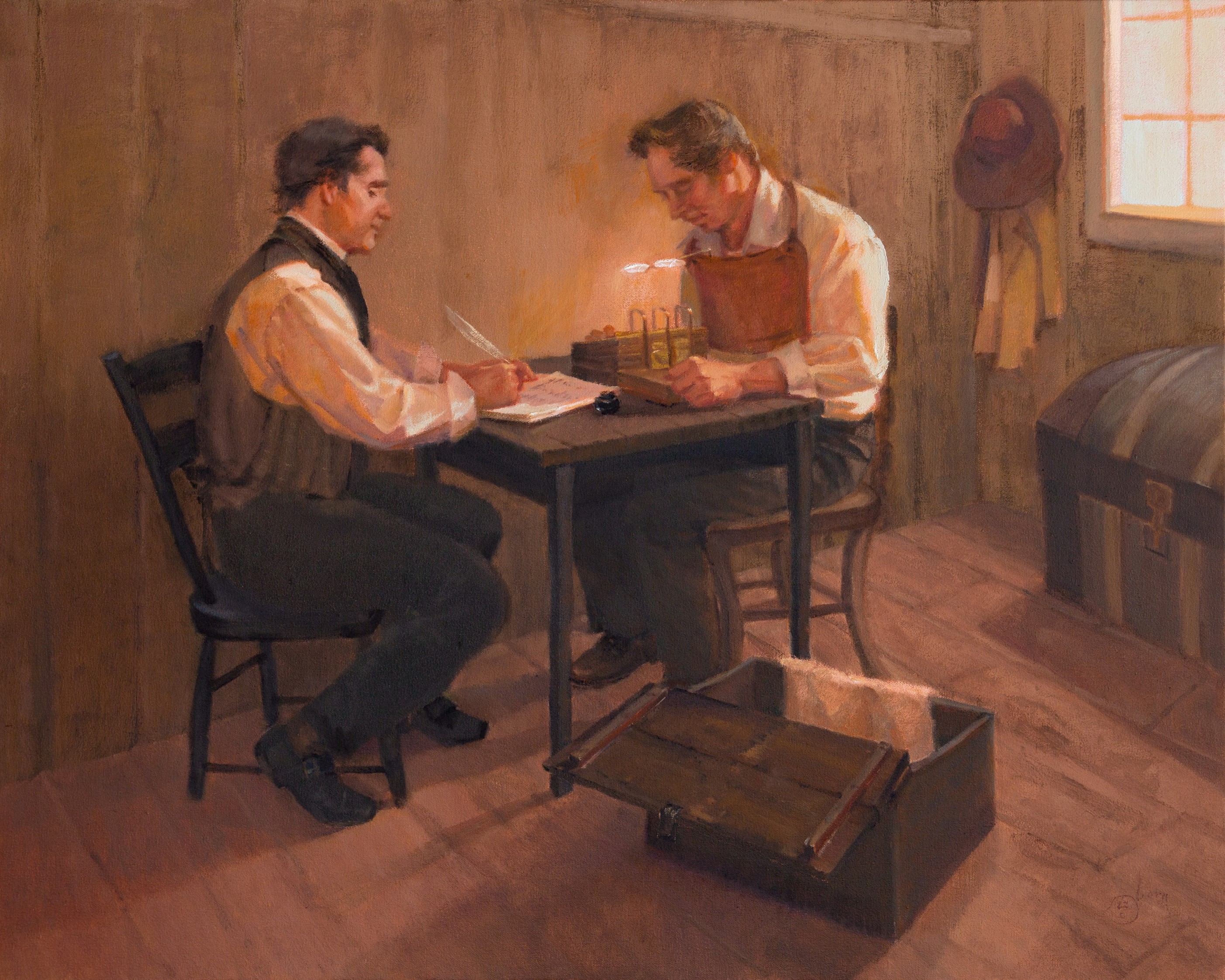
According to Historians, the plates were covered during translation. You can’t translate with covered plates. Why do they say Joseph didn’t even look at the plates? Because, that would disprove their idea that the words to be written down were found on the stone. They say Joseph dictated words from an unknown source. Think about it. Who gave the words on the stone? Christ? Nephi? An Angel? Historians want us to believe that? Why did Nephi and Mormon work so hard to write on and protect the plates, if Joseph would have never needed them? Silly and sad again.![]()
![]()
I believe teaching a stone was used and the plates were never looked at, may be a possible way of steadying the ark as I have discussed above. Using a stone in a hat is nowhere to be found in the scriptures, but using the spectacles fastened to the breastplate is mentioned over 7 times beginning with Joseph Smith History which says, “Also, that there were two stones in silver bows—and these stones, fastened to a , constituted what is called the —deposited with the plates; and the possession and use of these stones were what constituted in ancient or former times; and that God had prepared them for the purpose of translating the book.” JSH 1:35 Other scriptures here: JSH 1:35,52,62,75*; Mosiah 28:13, 20; Ether 3:22-23; 4:5; Alma 37:21, 24-25
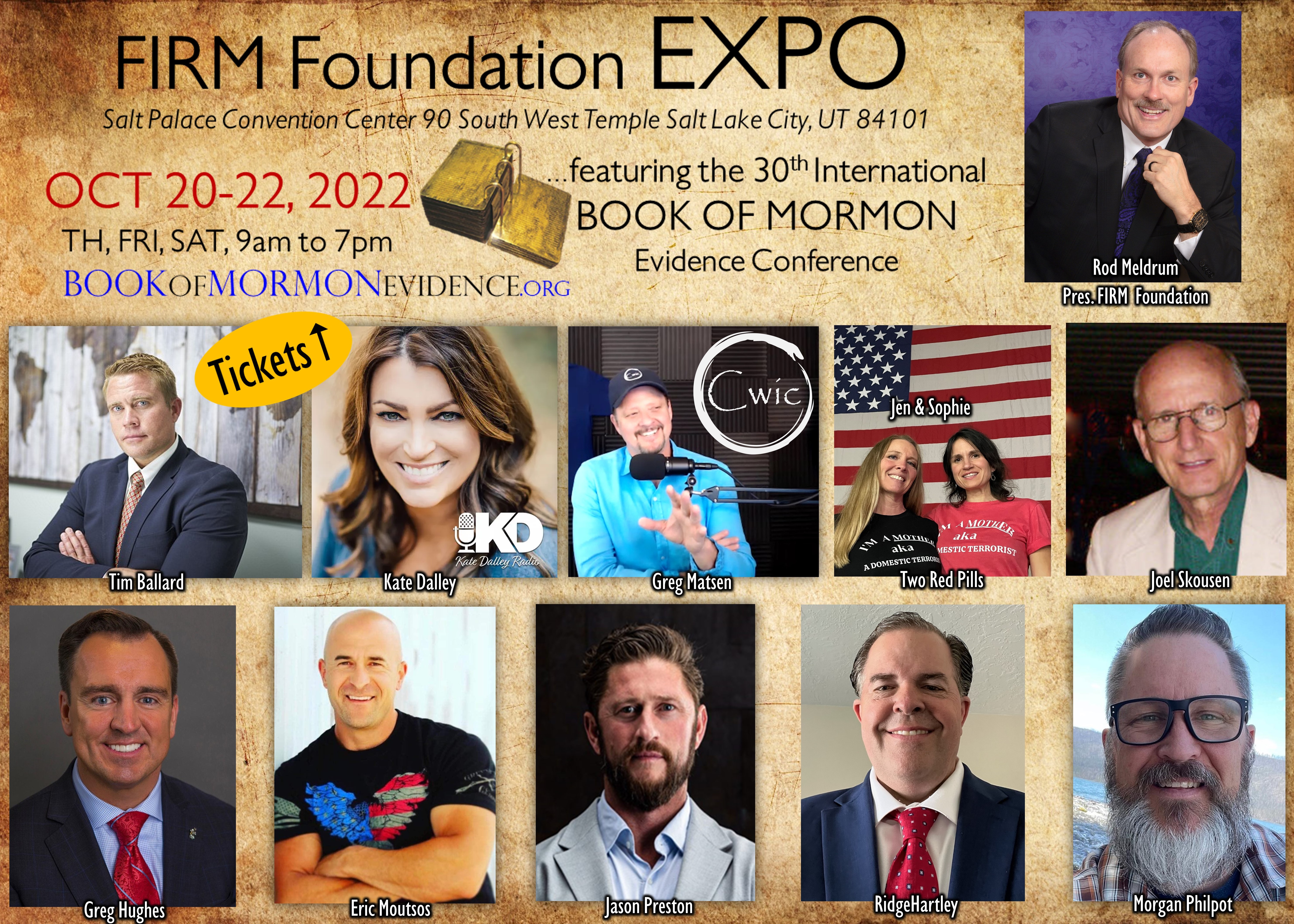
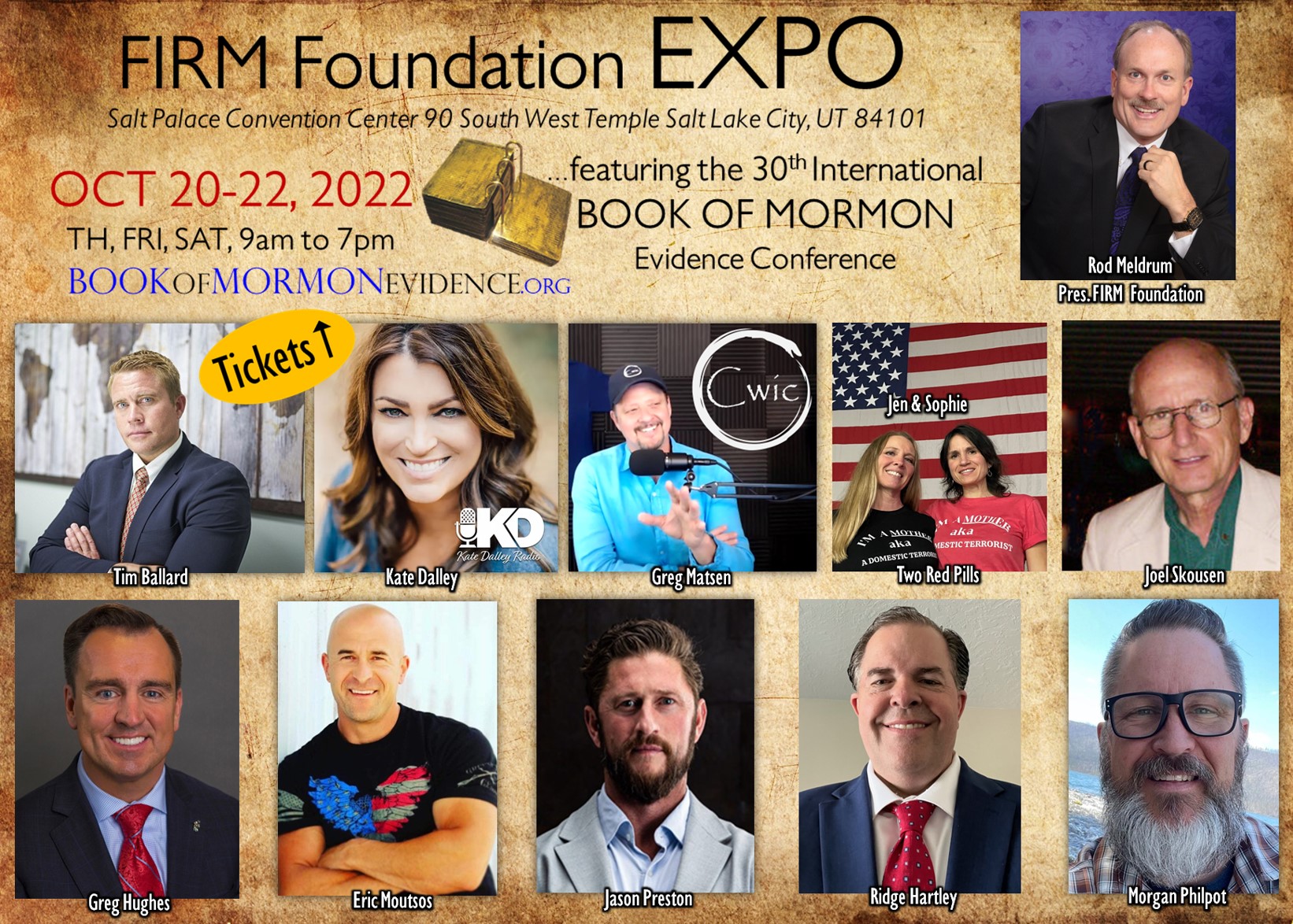
Join us at our Live Expo in Salt Lake City, UT
Ark of The Church of Jesus Christ of Latter-day Saints
D&C 85:7. Why Are Individuals Still Claiming to Be the “One Mighty and Strong”?
Some modern people have created cults of their own, and among them are those who attempt to take refuge in section 85 of the Doctrine and Covenants.
“They endeavor to say that the Church has gone astray, that the leaders are no longer inspired, and that ‘one mighty and strong’ is needed to take over the affairs of the Lord. And without any evidence of modesty whatsoever on their parts, they themselves volunteer for the position.” (Mark E. Petersen, in Conference Report, Apr. 1973, p. 159; or Ensign, July 1973, p. 110.)
Such people become guilty of the very thing this scripture warns against: they take it upon themselves to “steady the ark” (see Notes and Commentary for D&C 85:8). https://www.churchofjesuschrist.org/manual/doctrine-and-covenants-student-manual/section-85-those-who-put-their-hands-to-steady-the-ark?lang=eng
D&C 85:8. What Does It Mean to “Steady the Ark of God”?

This phrase refers to an incident during the reign of King David in ancient Israel. The Philistines had captured the ark of the covenant in battle but returned it when they were struck by plagues (see 1 Samuel 4–6). David and the people later brought the ark to Jerusalem in an ox cart, driven by Uzzah and Ahio. “And when they came to Nachon’s threshingfloor, Uzzah put forth his hand to the ark of God, and took hold of it; for the oxen shook it. And the anger of the Lord was kindled against Uzzah; and God smote him there for his error, and there he died by the ark of God” (2 Samuel 6:6–7; see vv. 1–11). The ark was the symbol of God’s presence, His glory and majesty. When first given to Israel, the ark was placed in the Holy of Holies in the tabernacle, and not even the priest was allowed to approach it. Only the high priest, a type of Christ, could approach it, and then only after going through an elaborate ritual of personal cleansing and propitiation for his sins. The scriptures teach that no unclean thing can dwell in God’s presence (see Moses 6:57). His presence is like a consuming fire (see Hebrews 12:29). Those who bear the vessels of the Lord must be clean (see D&C 133:5).
However well-meaning Uzziah’s intentions, he approached casually what could only be approached under the strictest conditions. He had no faith in God’s power. He assumed that the ark was in danger, forgetting that it was the physical symbol of the God who has all power. We cannot presume to save God and His kingdom through our own efforts.
“Uzzah’s offence consisted in the fact that he had touched the ark with profane feelings, although with good intentions, namely to prevent its rolling over and falling from the cart. Touching the ark, the throne of the divine glory and visible pledge of the invisible presence of the Lord, was a violation of the majesty of the holy God. ‘Uzzah was therefore a type of all who with good intentions, humanly speaking, yet with unsanctified minds, interfere in the affairs of the kingdom of God, from the notion that they are in danger, and with the hope of saving them’ (O.V. Gerlach).” (Keil and Delitzsch, Commentary, bk. 2: Joshua, Judges, Ruth, 1 and 2 Samuel, “Second Book of Samuel,” p. 333.)
This concept can be a difficult one to understand and obey. By the flesh we mostly feel Uzzah is justified because he wants to save and prevent physical damages to the ark. However the higher law is to not worry about the earthly things and realize that God already has a Spiritual plan to save the Ark or the Church or even our soul.
In modern revelation the Lord referred to this incident to teach the principle that the Lord does not need the help of men to defend his kingdom (see D&C 85:8). Yet even today there are those who fear the ark is tottering and presume to steady its course. There are those who are sure that women are not being treated fairly in the Church, those who would extend some unauthorized blessing, or those who would change the established doctrines of the Church. These are ark-steadiers. The best intentions do not justify such interference with the Lord’s plan. President David O. McKay said:
“It is a little dangerous for us to go out of our own sphere and try unauthoritatively to direct the efforts of a brother. You remember the case of Uzzah who stretched forth his hand to steady the ark. (See I Chron. 13:7–10.) He seemed justified, when the oxen stumbled, in putting forth his hand to steady that symbol of the covenant. We today think his punishment was very severe. Be that as it may, the incident conveys a lesson of life. Let us look around us and see how quickly men who attempt unauthoritatively to steady the ark die spiritually. Their souls become embittered, their minds distorted, their judgments faulty, and their spirits depressed. Such is the pitiable condition of men who, neglecting their own responsibilities, spend their time in finding fault with others.” (McKay, Gospel Ideals, p. 258.)
President John Taylor observed:

“We have more or less of the principles of insubordination among us. But there is a principle associated with the kingdom of God that recognizes God in all things, and that recognizes the priesthood in all things, and those who do not do it had better repent or they will come to a stand very quickly; I tell you that in the name of the Lord. Do not think you are wise and that you can manage and manipulate the priesthood, for you cannot do it. God must manage, regulate, dictate, and stand at the head, and every man in his place. The ark of God does not need steadying, especially by incompetent men without revelation and without knowledge of the kingdom of God and its laws. It is a great work that we are engaged in, and it is for us to prepare ourselves for the labor before us, and to acknowledge God, his authority, his law and his priesthood in all things.” (Taylor, Gospel Kingdom, p. 166.)
David O. McKay warned that unauthorized individuals who attempt to “steady the ark” die spiritually.
THE SACRED CHEROKEE ARK
by Danny (Deni Uguku” Troxell, Bird Clan, a Thunderbolt Cherokee descendant orf Cornblossom. Click here to visit his Aniyuntikwalaski (People of the Lightning and Thunder aka Chickamauga Cheerokee) website
Ta-Ka-E-Tuh said his people had very greatly degenerated from what they were in his early youth: and that many of the observances now kept up had been desecrated from solemn religious rites into mere scenes of revelry. The cause of this, as he said, was the capture, of the Delawares, of their religious deposit, (the interpreter called it the ark,) which contained the symbols of their worship. I inquired what were these symbols? He either could not, or would not, tell me. I feared they might be something like idols, … but he assured me the Cherokees had never worshipped idols, or any visible representation of God. When I told him of the nations that worshipped idols, he said they must be fools.
Reminiscences of the Indians, Cephas Washburn, 1869
But their (Hebrews) modes and objects of worship, differed very widely from those of the Americans (Cherokees) … p170
They are such strict observers of the law of purification, and think it so essential in obtaining health and success in war as not to allow the best beloved trader that ever lived among them, even to enter the beloved ground, appropriated to the religious duty of being sanctified for war; much less to associate with the camp in the woods, though he went (as I have known it to happen) on the same war design; – they oblige him to walk and encamp separate and by himself, as an impure and dangerous animal, till the leader has purified him, according to their usual time and method, with the consecrated things of the ark…
The Indian ark is of a very simple construction, and it is only the intention and application of it, that makes it worthy of notice; for it is made with pieces of wood securely fashioned together in the form of a square. The middle of three of the sides extend a little out, but one side is flat, for the conveniency of the person’s back who carries it. Their ark has a cover and the whole is made impenetrably close with Hickory splinters; the leader, and a beloved waiter, carry it by turns. It contains several consecrated vessels, made by super annuated (ghi ga hu) women, and of such various antiquated forms, as would have puzzled Adam to give significant names to each. The leader and his attendant, are purified longer than the rest of the company, that the first may be fit to act in the religious office of a priest of war, and the other to carry the awful sacred ark. All the while they are at war, the Hessitu, or “beloved waiter” feeds each of the warriors by an exact stated rule, giving them even the water they drink, out of his own hands, lest by intemperance they should spoil the supposed communicative power of their holy things, and occasion fatal disasters to the war camp. In speaking of the Indian places of refuge for the unfortunate, I observed, that if a captive taken by the reputed power of the beloved things of the ark, should be able to make his escape into one of these towns, or even into the winter house of the Archi-magus, he is delivered from the fiery torture, otherwise inevitable. It is also highly worthy of notice, that they never place the ark on the ground, nor sit on the bare earth while they are carrying it against the enemy. On hilly ground where stones are plenty, they place it on them: but in level land upon short logs, always resting themselves on like materials. Formerly, when this tract was the Indian Flanders of America, as the French and all their red Canadian confederates were bitter enemies to the inhabitants, we often saw the woods full of such religious war- reliques. p 168-169

…their strict purity in their war camps; that Opae, “the leader”, obliges all during the first campaign they make with the beloved ark, to stand, every day they lie by, from sun-rise to sun-set and after a fatiguing day’s march, and with scanty allowance, to drink warm water imbitttered with rattle-snake-root very plentifully, in order to be purified – that they have also as strong a faith of the power and holiness of their ark as the Israelites ascribing the superior success of the party to their stricter adherence to the law then the other and after they returned home hang it on the leaders war pole. p170
The ark is said to be so sacred and dangerous to be touched, either by their own, sanctified warriors, or the spoiling enemy, that they durst not touch it for any reason. It is not to be meddled with by anyone except the war chief and his waiter under the penalty of incurring great evil. Nor would the most inveterate enemy touch it in the woods for the same reason. If their war expedition failed then they said it was because of the vicious conduct of some of the followers of the beloved ark… p170
*A gentleman who was at the Ohio, in the year 1756, assured me he saw a stranger there very importunate to view the inside of the Cherokee ark, which was covered with a drest deerskin and placed on a couple of short blocks. An Indian sentinel watched it armed with a hickory bow and the brass pointed arrows and he was faithful to his trust for finding the stranger obtruding to pollute the supposed sacred vehicle, he drew an arrow to the head and would have shot him through the body had he not suddenly withdrawn; the interpreter, when asked by the gentleman what it contained, told him there was nothing in it but a bundle of conjuring traps. p170
When they have finished their fast and purifications, they set off, at the fixed time, be it fair or foul, firing their guns, whooping, and hallooing, as they march. The war-leader (savanoko) goes first, carrying the holy ark: he (or she) soon strikes up the awful and solemn song … The rest follow in one line … now and then sounding the war whoo-whoop, to make the war-leader’s song the more striking …” Adair’s History of the American Indian, James Adair, London 1775
Buttrick: Antiquities p.12- refers to the ark being covered with a deerskin “to be set up when they rested and carried when they journeyed.”
Note added by a 7th great grandson of The war-leader Savanoko:
It was the ONLY duty of the Cherokee Oukah to travel to each Cherokee town annually and to read The Law contained in The Ark. He only wore white, lived in a stone house, traveled in a sedan chair wherever he went, and his feet were never allowed to touch the ground… all indicating that he observed ritual purity from corpse contamination which was required of a levitical priest. http://americancherokeeassociation.com/cherokee-hebrew-roots-connection/cherokee-ark.htm
Ark of the Covenant
The Ark of the Covenant is one of the greatest unsolved mysteries of antiquity. The story of the sacred ark is familiar to many, yet the enigmatic subject is seldom discussed or dissected by the modern theologians of religious studies.
What Is The Ark of the Covenant?
(from Wikipedia.com)
The Ark of the Covenant (Hebrew: אָרוֹן הַבְּרִית ʾĀrôn Habbərît, modern pron. Aron Habrit), also known as the Ark of the Testimony, is a chest described in the Book of Exodus as containing the Tablets of Stone on which the Ten Commandments were inscribed. According to some traditional interpretations of the Book of Exodus, Book of Numbers, and the Letter to the Hebrews, the Ark also contained Aaron’s rod, a jar of manna and the first Torah scroll as written by Moses; however, the first of the Books of Kings says that at the time of King Solomon, the Ark contained only the two Tablets of the Law. According to the Book of Exodus, the Ark was built at the command of God, in accordance with the instructions given to Moses on Mount Sinai. God was said to have communicated with Moses “from between the two cherubim” on the Ark’s cover.

Where Did The Ark Come From?
According to the Book of Exodus, Yahweh (God) came to Moses during his 40-day stay upon Mount Sinai and instructed him to build a sacred ‘box’ made of shittim wood to house the divine Tablets of Stone, which were the Ten Commandments (Exodus 19:20; 24:18). The prophet of Yahweh was given the pattern and furnishings required of the Ark; Moses employed Bezalel and Oholiab to construct the divine chest and built it according to the Creator’s detailed and specific instructions (Exodus 31). The Ark was placed in a special tent known as the Tabernacle, when it was not being carried across the wilderness during the 40 year Hebrew exodus. A description of the Ark can be found in the following chapters of Exodus: 25, 26, 27.
What Was The Purpose of the Ark?
As mentioned above, God instructed Moses to build a sacred box to store the divine Tablets of Stone, that were written by the hand of Yahweh himself, for safe keeping. The Hebrew priests became the vanguard of the Ark, starting with Aaron (brother of Moses) and the first high priest of the Israelite nation. When the Israelites, led by Joshua who was leading the exodus toward the Promised Land, arrived at the banks of the River Jordan, the Ark was carried in the lead preceding the people. During the crossing, the river grew dry as soon as the feet of the priests carrying the Ark touched its waters, and remained so until the priests—with the Ark—left the river after the people had passed over. As a memorial for this great miracle, twelve stones (representing the twelve tribes of Israel) were taken from the River Jordan at the place where the priests had stood (Joshua 3 and 4).
Is this anything unlike the Lord instructing Joseph to have Alvin build him a box to store the Gold Plates, or the Lord having Moroni build a box out of cement to store the plates and the Urim and Thummim in, or a place that the Brother of Jared could hide the plates to be found by Limhi later? That which is sacred is to be protected, or kept out of sight.
According to the narrative of the Battle of Jericho, the Ark was carried around the city once a day for seven (7) days, preceded by the armed men and seven (7) priests sounding seven (7) trumpets of rams’ horns (Joshua 6:4-15). On the seventh day, the priests sounding the trumpets of rams’ horns before the Ark marched around the city seven (7) times and, with a great shout, Jericho’s wall fell down and the Israelites took the city (Joshua 6:16-20).
After the defeat at Ai, Joshua lamented before the Ark (Joshua 7:6-9). When Joshua read the Law to the people between Mount Gerizim and Mount Ebal, they stood on each side of the Ark.
In retrospect, the main purpose of the Ark of the Covenant was to not only protect the Israelites, but for the Israelites to give the respect due to their Great Creator.
Where Was The Ark Located?
After a short stay in Gilgal, the Ark was moved to Shiloh by Joshua, not long after the settlement of the Israelites in Canaan, during Samuel’s apprenticeship (1 Sam. 3:3). The Ark remained in the Tabernacle at Shiloh until the time of Eli, between 300 and 400 years (Jeremiah 7:12), when it was carried into the field of battle. The Ark was taken by the Philistines (1 Samuel 4:3-11) who subsequently sent it back after retaining it for seven (7) months (1 Sam. 5:7, 8) because of the unfortunate events said to have transpired. For further information about the capture of the Ark by the Philistines, please visit Philistine captivity of the Ark.

The Philistines, on the advice of their diviners, returned the Ark to the Israelites, accompanying its return with an offering consisting of golden images of the tumors and mice [wherewith they had been afflicted]. The Ark was set in the field of Joshua the Beth-shemesh (1 Samuel 6:1-15). Out of curiosity the men of Beth-shemesh gazed at the Ark; and as a punishment, seventy of them were smitten by the Lord (1 Samuel 6:19). The Bethshemites sent to Kirjath-jearim to have the Ark removed (1 Samuel 6:21); and it was taken to the house of Abinadab, whose son, Eleazar, was sanctified to keep watch over it. Kirjath-jearim remained the abode of the Ark of the Covenant for twenty years. Under Saul, the Ark was with the army before he first met the Philistines, but the king was too impatient to consult it before engaging in battle… hence the capture of the Ark by the Philistines. In 1 Chronicles 13:3 it is stated that the people did consult the Ark in the days of Saul.
During the early reign of King David, he removed the Ark from Kirjath-jearim, but abandoned it before entering Zion. Uzzah, one of the drivers of the cart whereon the Ark was carried, put out his hand to steady the Ark, and was smitten by God for touching it. David, in fear, carried the Ark aside into the house of the Obed-edom the Gittite and there it stayed three (3) months (2 Samuel 6:1-11; 1 Chronicles 13:1-13). When King David learned that God had blessed Obed-edom, he had the Ark brought to Zion by the Levites. The Levites were appointed to minister before the Ark (1 Chronicles 16:4). David’s plan of building a temple for the Ark was halted at the advice of God (2 Sam. 7:1-17; 1 Chron. 17:1-15; 28:2, 3). The Ark was with the army during the siege of Rabbah (2 Sam. 11:11); and, when David fled from Jerusalem at the time of Absalom’s conspiracy, the Ark was carried along with him until he ordered Zadok the priest to return it to Jerusalem (2 Sam. 15:24-29). For further information about the return of the Ark to King David’s possession, please visit: Ark of the Covenant in Zion
King Solomon worshipped before the Ark after his dream in which God promised him wisdom (1 Kings 3:15). During the construction of Solomon’s Temple, a special inner room, named Kodesh Hakodashim (Holy of Holies), was prepared to receive and house the Ark (1 Kings 6:19). When the Temple was dedicated, the Ark was placed in the inner holy room (1 Kings 8:6-9) and there it remained for over the next three hundred years. It is written, when the priests emerged from the holy place after placing the Ark there, the Temple was filled with a cloud, “for the glory of the Lord had filled the house of the Lord” (1 Kings 8:10-11; 2 Chron. 5:13, 14)
What Happened to the Ark?
In 586 BC, the Babylonians destroyed Jerusalem and Solomon’s Temple. However, there is no record of what became of the Ark in the Books of Kings and Chronicles. But, the 3rd Book of Ezra (1 Esdras) suggests that the Babylonians:
“…took all the holy vessels of the Lord, both great and small, and the ark of God, and the king’s treasures, and carried them away into Babylon.” (1 Esdras 1:54)
In Rabbinic Literature, the final disposition of the Ark is disputed. Some Rabbis hold that it must have been carried off to Babylon, while others claim that it must have been hidden lest it be carried off into Babylon and never brought back. According to the Jewish book of Second Maccabees and the Greek text in the Septuagint, at the beginning of chapter 2:
The records show that it was the prophet Jeremiah who, …. prompted by a divine message … gave orders that the Tent of Meeting and the ark should go with him. Then he went away to the mountain from the top of which Moses saw God’s promised land. When he reached the mountain, Jeremiah found a cave-dwelling; he carried the tent, the ark, and the incense-altar into it, then blocked up the entrance. Some of his companions came to mark out the way, but were unable to find it. When Jeremiah learned of this, he reprimanded them. ‘The place shall remain unknown’, he said, ‘until God finally gathers his people together and shows mercy to them. The Lord will bring these things to light again, and the glory of the Lord will appear with the cloud, as it was seen both in the time of Moses and when Solomon prayed that the shrine might be worthily consecrated.’ (II Maccabees 2:4-8.)
Note: The “mountain from the top of which Moses saw God’s promised land” would be Mount Nebo, located in what is now Jordan.

In the New Testament of the Christian Bible, the Ark is mentioned in Hebrews 9:4 and Revelation 11:19 and states that the Ark contained “the golden pot that had manna, and Aaron’s rod that budded, and the tablets of the covenant.” (Hebrews); and, says the prophet saw God’s temple in heaven opened, “and the ark of his covenant was seen within his temple.” (Revelation). But it does not enlighten the reader about what actually happened to the Ark.
In Sura 2:248, of the Islamic Qur’an, the Children of Israel, at the time of Samuel and Saul, were given back the Tabut E Sakina (the casket of Shekhinah) which contained remnants of the household of Musa (Moses) and Harun (Aaron) carried by angels which confirmed peace and reassurance for them from their Lord. The Qur’an states:
“And (further) their Prophet said to them: “A Sign of his authority is that there shall come to you the Ark of the Covenant, with (an assurance) therein of security (Sakina) from your Lord, and the relics left by the family of Moses and the family of Aaron, carried by angels. In this is a symbol for you if ye indeed have faith.”
The Islamic scholar Al Baidawi mentioned that the sakina could be Tawrat, the Books of Moses. According to Al-Jalalan, the relics in the Ark were the fragments of the two tablets, rods, robes, shoes, mitres of Moses and the vase of manna. According to most Muslim scholars, the Ark of the Covenant has a deep religious basis in Islam, and Islam gives it special significance. A Shia sect of Muslims believe that it will be found by Mahdi near the Qiyamah (end of times) from Lake Tiberias.
For further information about the Islamic history of the Ark, please visit Qisas Al-Anbiya (The Stories of the Prophets).
Current Theoretical Locations of the Ark…
There are a few nations that claim to possess the Ark of the Covenant today. The Ethiopian Orthodox Church, in Axum, not far from the border with Eritrea, claims to hold the Ark of the Covenant, or Tabot. The sacred chest is currently kept under guard in a treasury near the Church of Our Lady Mary of Zion and is used [occasionally] in ritual processions. Replicas of the Axum Tabot are kept in every Ethiopian church, each with its own dedication to a particular saint, the most popular of these include Mary, George and Michael.
The Lemba people of South Africa and Zimbabwe have claimed that their ancestors carried the Ark south, calling it the ngoma lungundu (“voice of God”), eventually hiding it in a deep cave in the Dumghe mountains, their spiritual home. On 14 April 2008, in a UK Channel 4 documentary, Tudor Parfitt, taking a literalistic approach to the Biblical story, described the research and theories of his claim. He says that the object described by the Lemba have several attributes similar to the Ark. It was of similar size, was carried on poles by priests, was not allowed to touch the ground, was revered as a voice of their God, and was a weapon of great power used to sweep enemies aside.
In his book, The Lost Ark of the Covenant (2008), Parfitt also suggests that the Ark was taken to Arabia following the events depicted in the Second Book of Maccabees, and cites Arabic sources which maintain it was brought in distant times to Yemen.
French author Louis Charpentier insisted that the Ark was taken to Chartres Cathedral by the Knights Templar. In 2003, author Graham Phillips hypothetically claimed that the Ark was taken to Mount Sinai in the Valley of Edom by the Maccabees. Phillips concluded it remained there until the 1180s, when Ralph de Sudeley, the leader of the Templars found the Maccabean treasure at Jebel al-Madhbah, returned home to his estate at Herdewyke in Warwickshire, England and taking the treasure with him
Several modern authors of recent times have theorised that the Ark was taken from Jerusalem to the village of Rennes-le-Château in Southern France. Karen Ralls has cited Freemason Patrick Byrne, who believes the Ark was moved from Rennes-le-Château at the outbreak of World War I to America
The Ark of the Covenant was said to have been kept in the Basilica of St. John Lateran, surviving the pillages of Rome by Genseric and Alaric I but lost when the basilica burned.
~ ~ ~ ~ ~ ~ ~ ~ ~ ~ ~ ~
In the Book of Jeremiah, it is referenced by the prophet Jeremiah, who [speaking in the days of King Josiah] prophesied a future time, possibly the end of days, when the Ark will no longer be talked about or be made again:
“And it shall be that when you multiply and become fruitful in the land, in those days – the word of the LORD – they will no longer say, ‘The Ark of the Covenant of the LORD’ and it will not come to mind; they will not mention it, and will not recall it, and it will not be used any more.” – Jeremiah 3:16 Rashi comments on this verse that “The entire people will be so imbued with the spirit of sanctity that God’s Presence will rest upon them collectively, as if the congregation itself was the Ark of the Covenant.”
Yet the question still remains… What really happened to the sacred Ark of the Covenant and where is it today?
Read my Blog here for some of the questions and answers below. or a blog here
“In those days when the Cherokee were a God-loving people, living in peace among themselves, they lived as one people, dwelling in half-moon shaped council houses. They had gone from living in caves to living in log-cabins. They still kept the sacred records of metal, some of which had come across the ocean waters with them, and others which they had continued keeping and making, scribing upon them as had been done before by the leaders of the People. They, too, had possession of the Ark of the Covenant, which they also had brought with them from their place of origin, existing across the eastern waters.” A SPECIAL REPORT on the RELIGIOUS KNOWLEDGE of the CHEROKEE INDIANS By: J. Murray Rawson
“At the site of an ancient city on the West Bank, archaeologists are hunting for evidence of the tabernacle that once housed the Ark of the Covenant.”
“The tabernacle was destroyed by the Philistines in 1050 B.C., Stripling told Fox News, around the same time that they briefly captured the Ark of the Covenant from the Israelites in a battle nearby. The Ark, however, was soon back in the hands of the Israelites.”
“While Shiloh’s link to the Ark of the Covenant is fascinating, Stripling notes that it was subsequently housed in a number of locations, where other tabernacles were built. “Later, the tabernacle was set up in other places, but we assume that it was rebuilt, reconstructed.”

